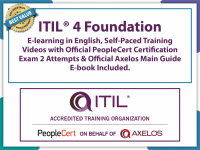The NIST CSF v 2.0 Foundation training program helps learners to understand the;
a. Core components & structure of the framework
b. Cybersecurity concepts
c. CSF Core Functions
d. CSF Core Categories
e. CSF Core Implementation Examples
f. CSF Organizational Profiles & Tiers
g. Integration of NIST CSF v 2.0 with SP 800 – 30, 37 & 53 Risk Management Framework
The NIST Cybersecurity Framework (CSF) 2.0 provides guidance to industry, government agencies, and other organizations to manage cybersecurity risks. It offers a taxonomy of high-level cybersecurity outcomes that can be used by any organization; regardless of its size, sector, or maturity to better understand, assess, prioritize, and communicate its cybersecurity efforts.
The CSF does not prescribe how outcomes should be achieved. Rather, it links to online resources that provide additional guidance on practices and controls that could be used to achieve those outcomes.
Ideally, the CSF will be used to address cybersecurity risks alongside other risks of the enterprise, including those that are financial, privacy, supply chain, reputational, technological, or physical in nature.
PART 1 – Introduction to NIST CSF v 2.0 Framework
- What is NIST CSF v 2.0?
- Key Objectives of NIST CSF v 2.0
- Core Components of NIST CSF v 2.0
- Key Updates & Enhancements in NIST CSF v 2.0
- Implementing NIST CSF v 2.0
- Benefits of NIST CSF v 2.0
- Understanding NIST CSF v 2.0 & ISO 27001:2022 Standard
PART 2 – Understanding Cybersecurity
- What is Cybersecurity?
- Why is it called Cyber?
- What is a Cyber Attack?
- Examples of Cyber Attack
- What is Cyber Crime?
- Who is a Cyber Criminal?
- What is Information Security?
- Difference between Information Security & Cyber Security?
- History of Cybersecurity
- Classification of Cyber Crimes
- Kinds of Cyber Crime
- Malware & its Types
- Reasons for Cyber Crime
PART 3 – Understanding CSF Core
- What is NIST CSF v 2.0 Core?
- Relevance of NIST CSF v 2.0 Core
- Importance of the NIST CSF v 2.0 Core
- Structure of the NIST CSF v 2.0 Core
- Why NIST CSF 2.0 Core Matters?
- Implementation of the NIST CSF v 2.0 Core
- Practical Steps to Implement the NIST CSF v 2.0 Core
- Understanding CSF Core – GOVERN (GV)
- Understanding CSF Core – IDENTIFY (ID)
- Understanding CSF Core – PROTECT (PR)
- Understanding CSF Core – DETECT (DE)
- Understanding CSF Core – RESPOND (RS)
- Understanding CSF Core – RECOVER (RC)
PART 4 – CSF Organizational Profiles
- What is a CSF Organizational Profile?
- Purpose of a CSF Profile
- Type of CSF Profile
- Relevance of the CSF Organizational Profile
- Importance of the CSF Organizational Profile
- Key Elements of the CSF Organizational Profile
- Implementation of the CSF Organizational Profile
- Examples of CSF Organizational Profile Use
- Benefits of the CSF Organizational Profile
- New Features in NIST CSF 2.0
- Key Aspects of Organizational Profiles
- Risks in creating Organizational Profiles
- Key consideration in creating Organizational Profiles
PART 5 – CSF Organizational Tiers
- What are CSF Tiers?
- The four CSF Tiers
- Relevance of CSF Tiers
- Importance of CSF Tiers
- Key Characteristics of Tiers
- Implementation of Tiers
- Examples of CSF Tier in action
- Benefits of using CSF Tier
- Risks in Creating & Deciding on Tiers
- Key Considerations in Deciding on Tiers
PART 6 – NIST CSF v 2.0 Integration
- SP 800-53, Security & Privacy Controls for Information Systems & Organizations
- SP 800-30, Guide for Conducting Risk Assessments from the NIST Risk Management Framework (RMF)
- SP 800- 37, Risk Management Framework for Information Systems & Organizations






